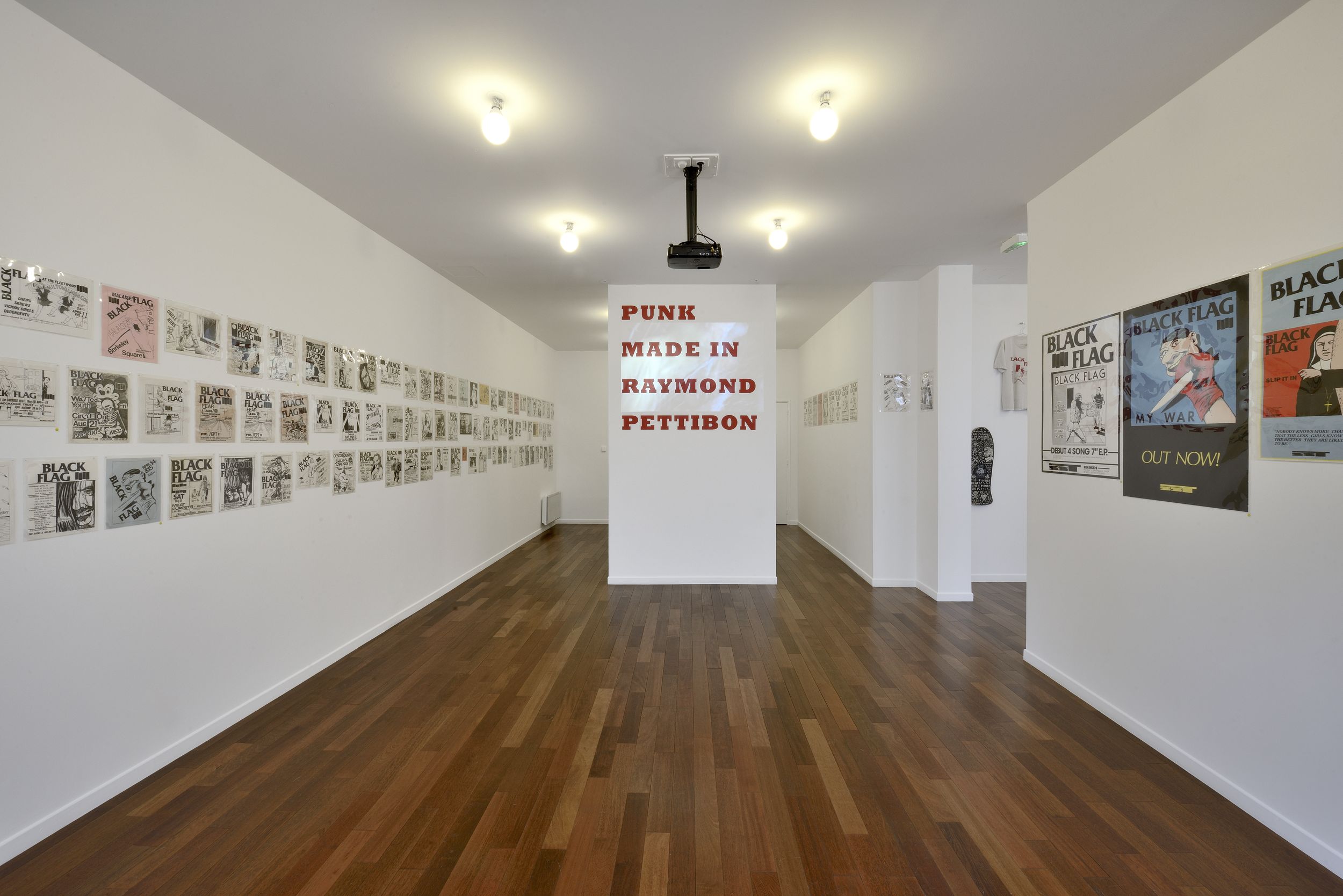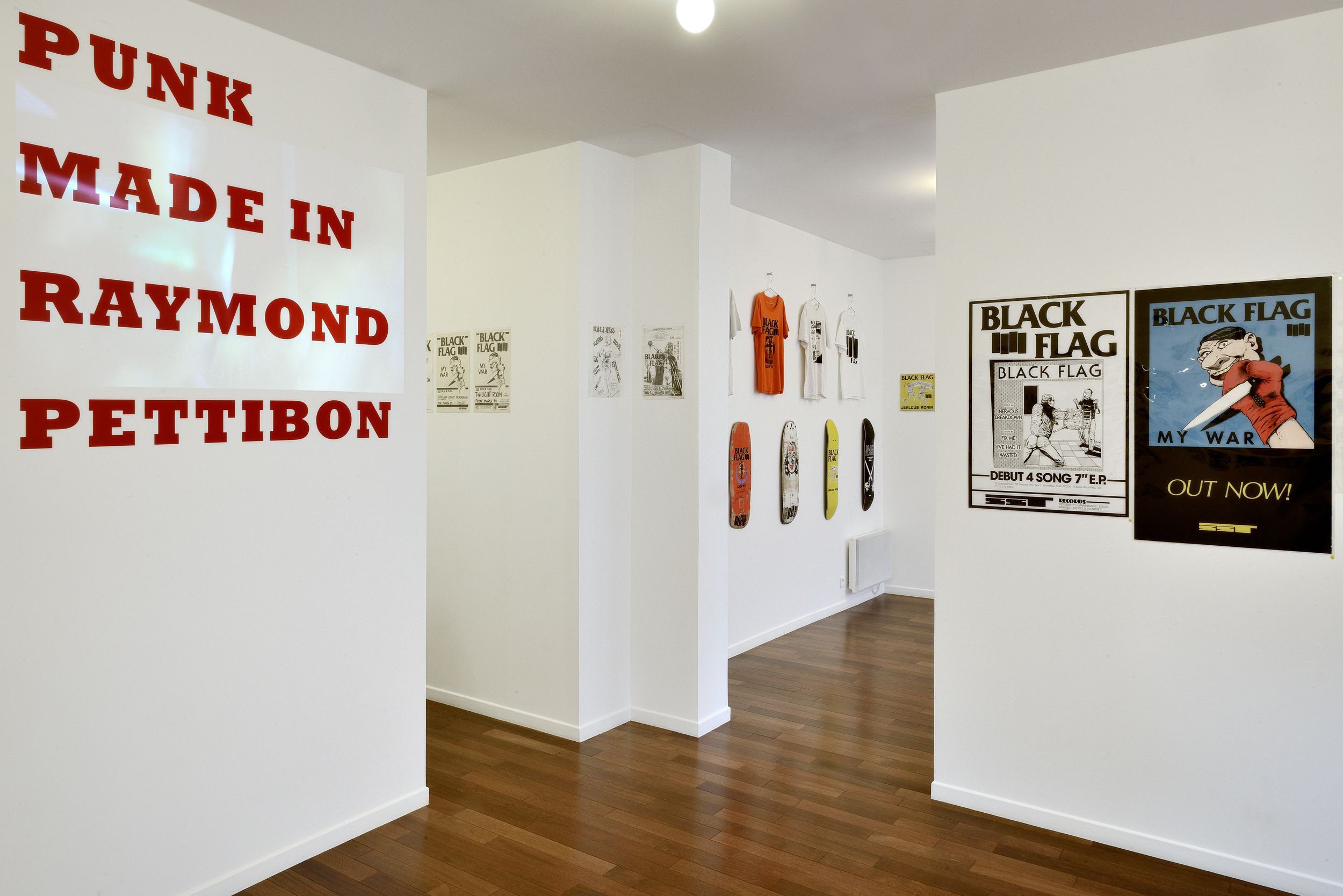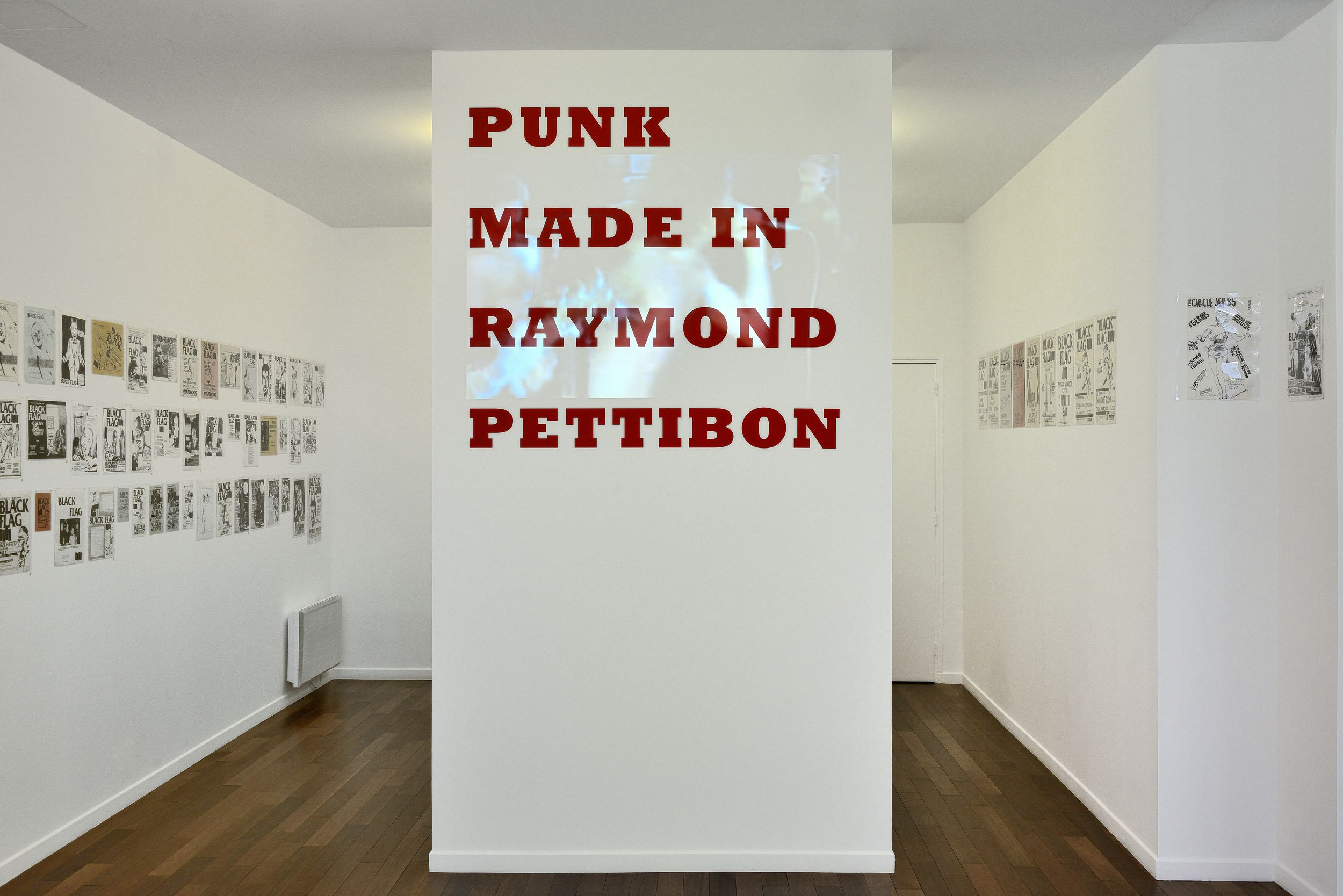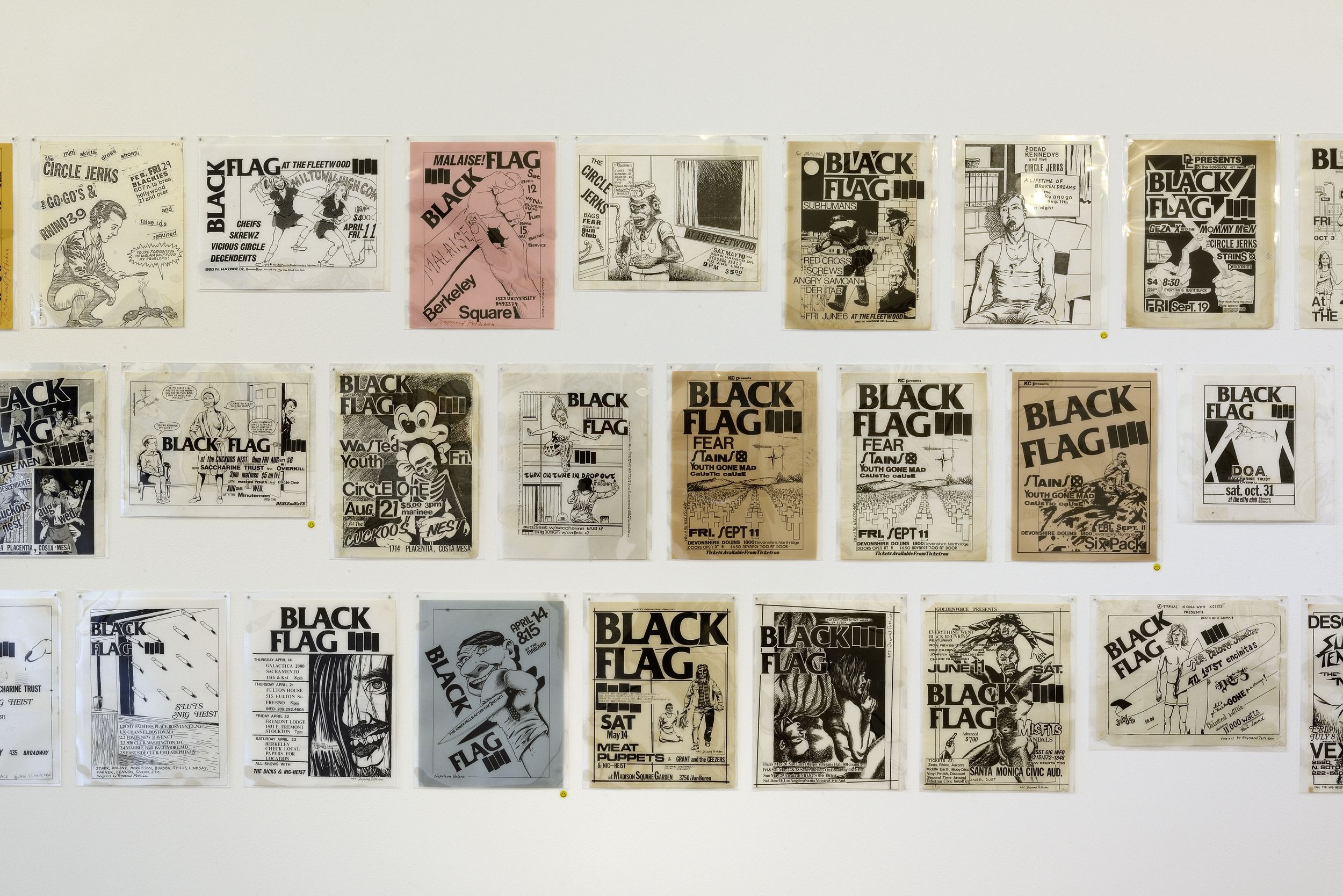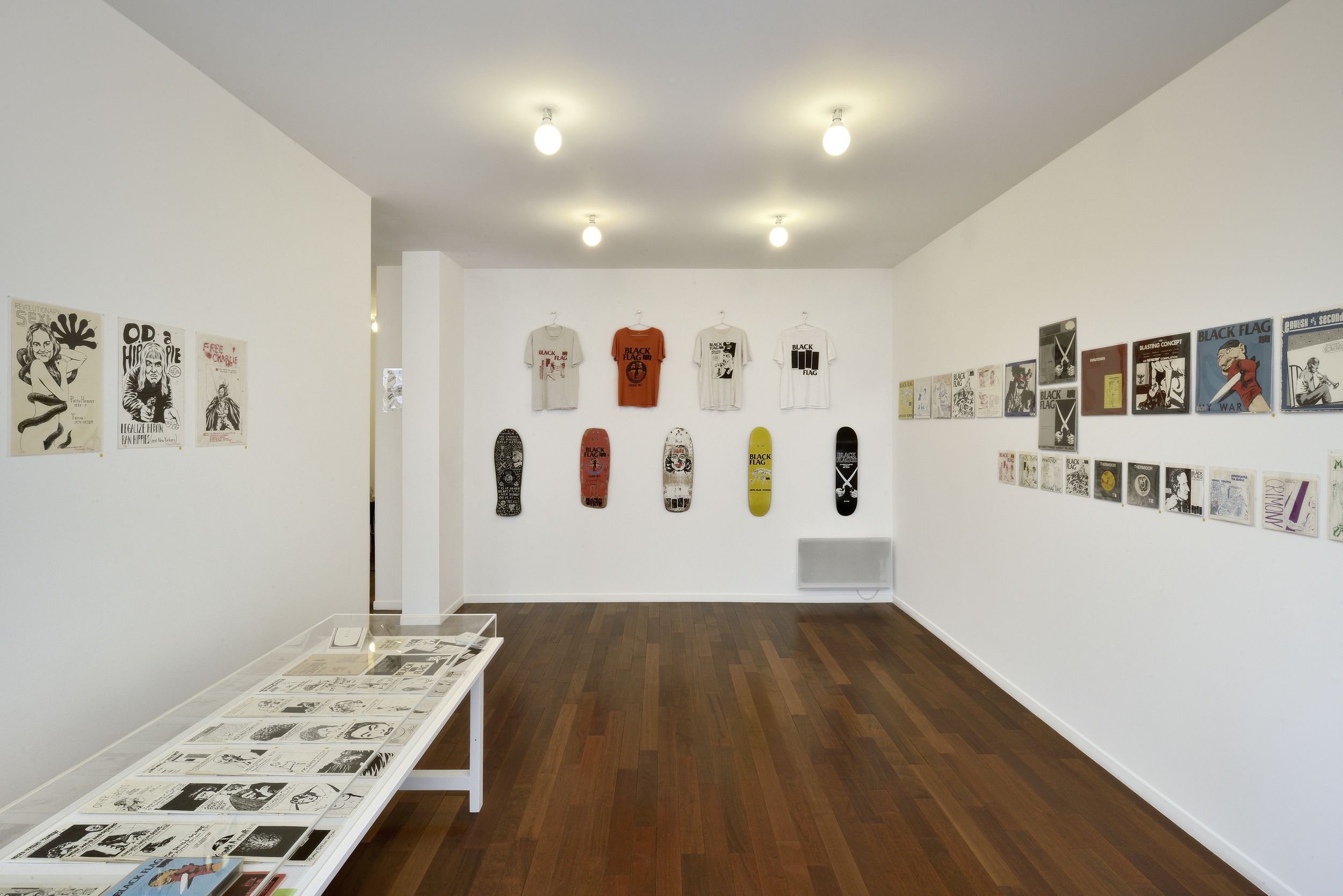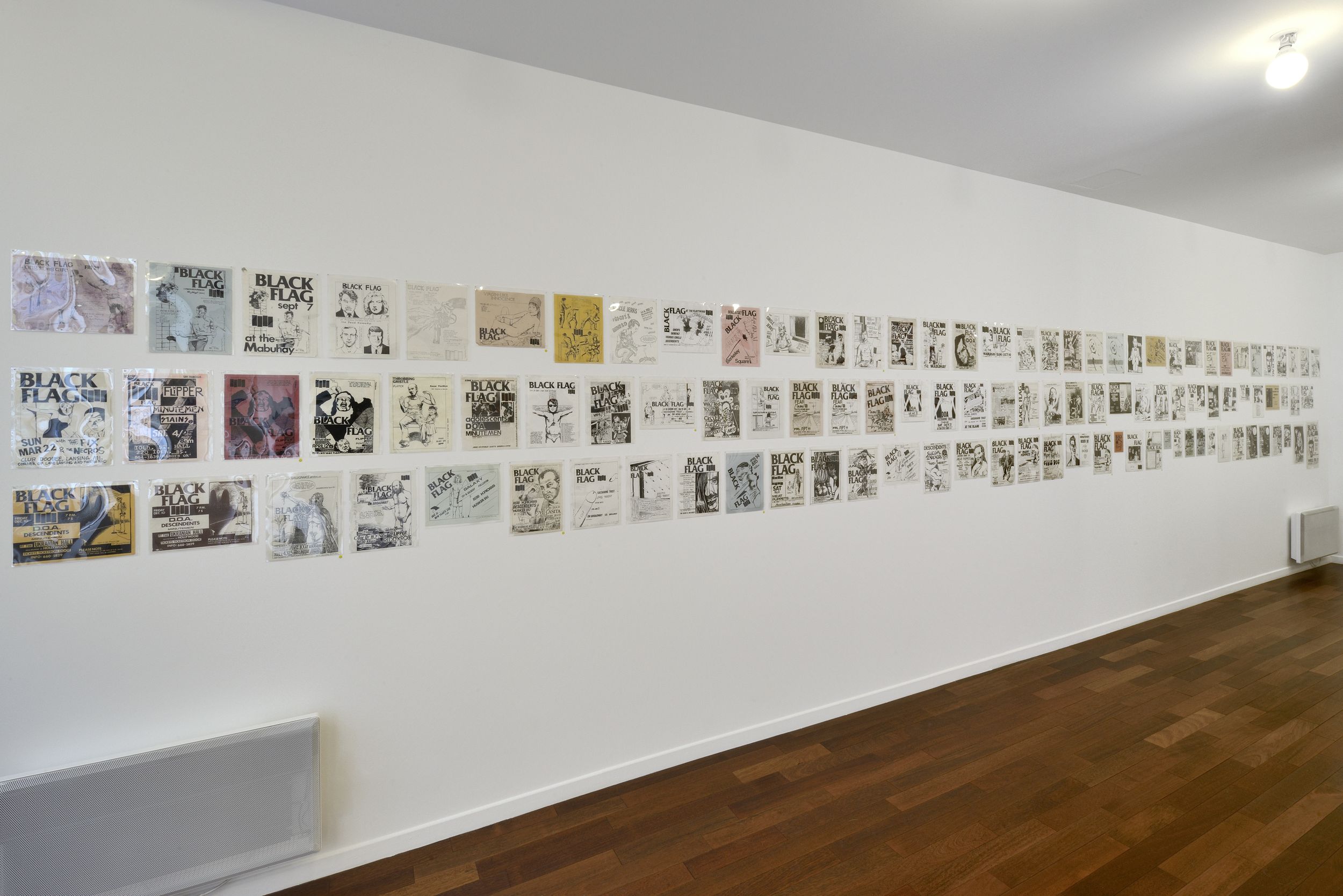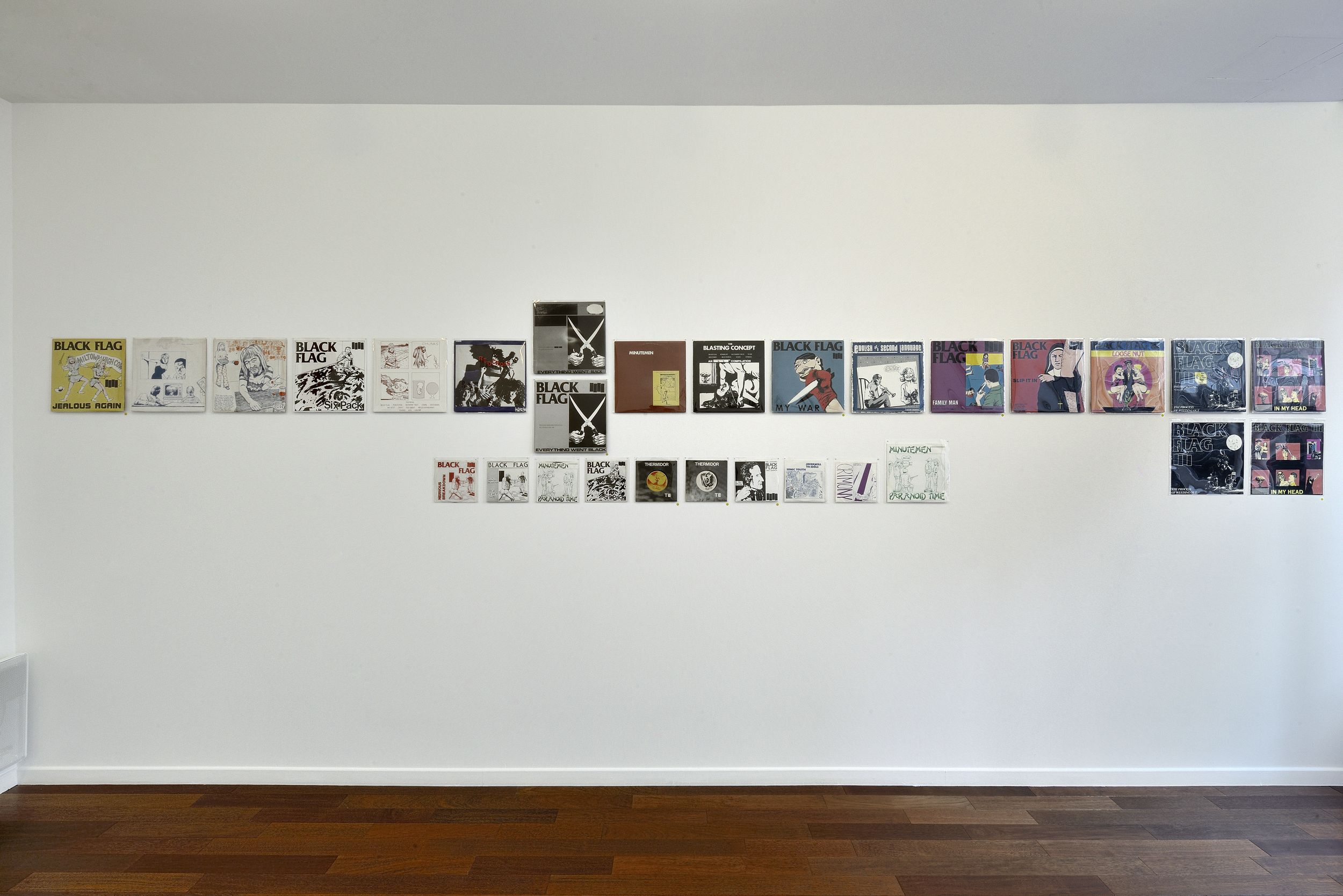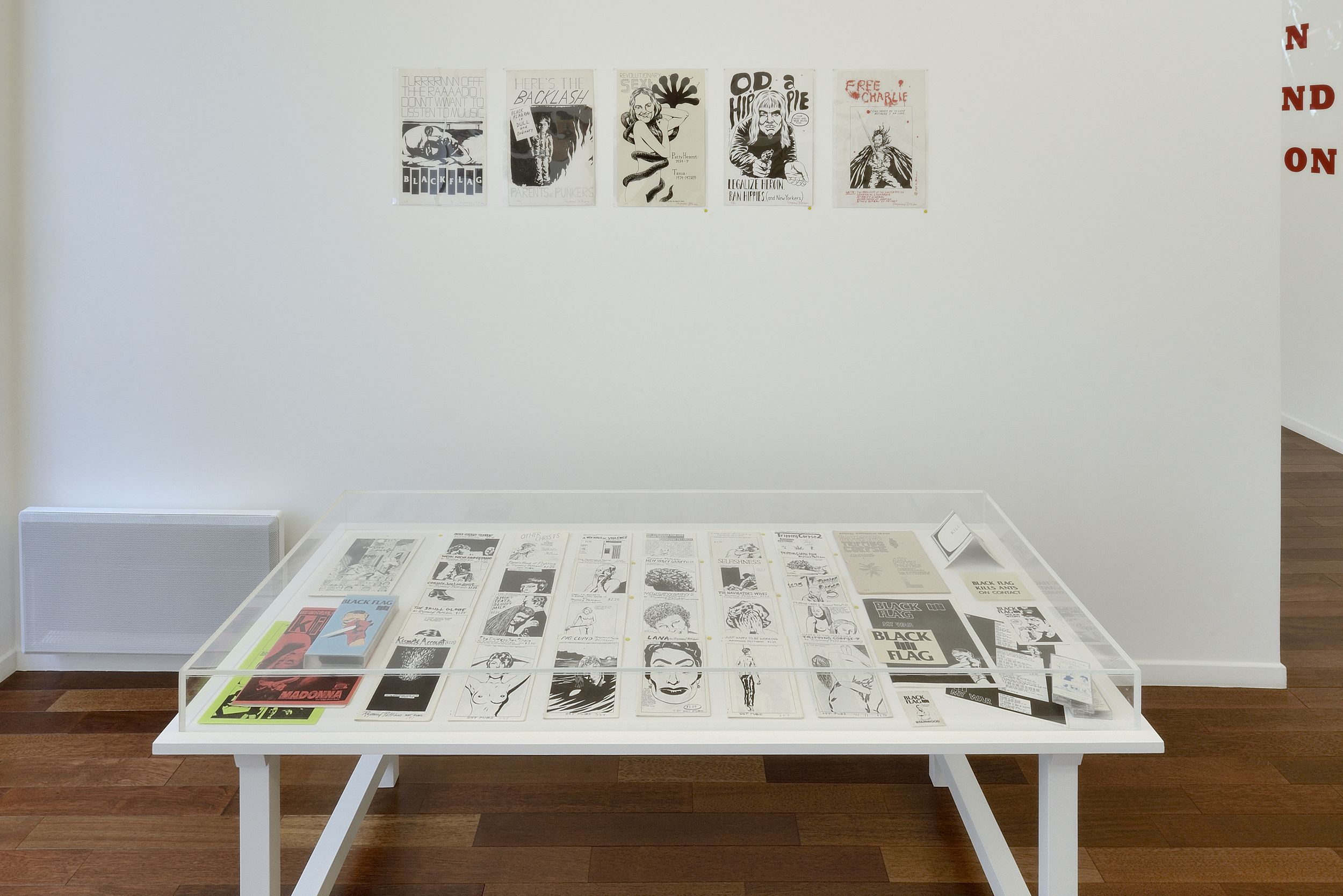PUNK cabinet de curiosités : 1978-1986 - Exhibitionmfc-michèle didier | Paris - Brussels - PARIS
From Friday September 13 to Saturday November 16, 2013
Opening on September 12, 2013 from 6pm to 9pm
An emblematical figure of the West Coast culture, Raymond Pettibon was born Raymond Ginn in 1957. Self-taught artist, he quickly leaves his job as a math teacher to focus on drawing for album covers produced by SST Records, a label founded by his brother Greg Ginn, who is also founder of the punk group Black Flag. It is Raymond who came up with the group’s stage name and who created Black Flag’s iconic draped logo made of four vertical black lines. The artist decides then to change his last name, Ginn, into his punk-name, Pettibon, a nickname given by his father.
Issued from the Southern California punk-rock culture of the late seventies and eighties and the “do-it-yourself” aesthetic of album covers, comics, concert flyers, and fanzines that characterized the movement, Pettibon's drawings have come to establish their own genre.
Between the years 1978 and 1986 Raymond Pettibon produced a trove of graphic works for the Southern California punk band Black Flag, as well as for Red Cross, The Minutemen, Nig Heist, and many others. Published predominately by SST Records, which was founded by Pettibon’s brother Greg, the exhibition features over two hundred gig flyers, artists’ books, album covers, posters, T-shirts, stickers, skateboard decks, and the first prints by Pettibon.
This exhibition shows a great preview of the artistic youth of Raymond Pettibon, his punk period, beginning with Raymond Pettibon’s first artists’ book Captive Chains published in 1978. Castration, dismemberment, suicide, murder, these are all themes he turns to. Pettibon likes to point out the unbalanced faces of society, through snap-shot images, which can be funny, violent and macabre at the same time. His drawings are violent, Pettibon admits: “And that’s dictated by the medium, in that I just use one frame. It’s like taking one frame out of a movie or one crucial scene out of a book at a critical point. You can’t really be subtle.” The visit ends with the announcement card for Pettibon’s first New York City one-man exhibition held at the Semaphone Gallery in March 1986, on which the text reads: “I am the wrench in people’s lives, really fixing them up.”
From Friday September 13 to Saturday November 16, 2013
Opening on September 12, 2013 from 6pm to 9pm
An emblematical figure of the West Coast culture, Raymond Pettibon was born Raymond Ginn in 1957. Self-taught artist, he quickly leaves his job as a math teacher to focus on drawing for album covers produced by SST Records, a label founded by his brother Greg Ginn, who is also founder of the punk group Black Flag. It is Raymond who came up with the group’s stage name and who created Black Flag’s iconic draped logo made of four vertical black lines. The artist decides then to change his last name, Ginn, into his punk-name, Pettibon, a nickname given by his father.
Issued from the Southern California punk-rock culture of the late seventies and eighties and the “do-it-yourself” aesthetic of album covers, comics, concert flyers, and fanzines that characterized the movement, Pettibon's drawings have come to establish their own genre.
Between the years 1978 and 1986 Raymond Pettibon produced a trove of graphic works for the Southern California punk band Black Flag, as well as for Red Cross, The Minutemen, Nig Heist, and many others. Published predominately by SST Records, which was founded by Pettibon’s brother Greg, the exhibition features over two hundred gig flyers, artists’ books, album covers, posters, T-shirts, stickers, skateboard decks, and the first prints by Pettibon.
This exhibition shows a great preview of the artistic youth of Raymond Pettibon, his punk period, beginning with Raymond Pettibon’s first artists’ book Captive Chains published in 1978. Castration, dismemberment, suicide, murder, these are all themes he turns to. Pettibon likes to point out the unbalanced faces of society, through snap-shot images, which can be funny, violent and macabre at the same time. His drawings are violent, Pettibon admits: “And that’s dictated by the medium, in that I just use one frame. It’s like taking one frame out of a movie or one crucial scene out of a book at a critical point. You can’t really be subtle.” The visit ends with the announcement card for Pettibon’s first New York City one-man exhibition held at the Semaphone Gallery in March 1986, on which the text reads: “I am the wrench in people’s lives, really fixing them up.”
